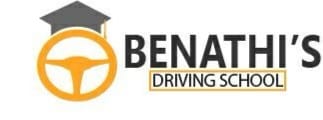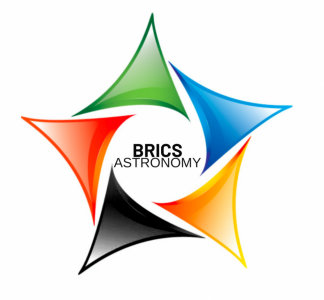Focusing on providing access to education, employment, and mobility.
This initiative is a societal benefit program established through a partnership with a social development organisation collaborating with SETAs (Sector Education and Training Authorities). It aims to target unemployed youth in South Africa and enroll them in a Skills Development Programme to obtain learner’s and driver’s licenses.
Although this program is not directly related to astronomy or the primary outputs of BITDN, it addresses a critical need in South Africa. For unemployed youth, particularly those with limited education beyond matric, having a driver’s license significantly improves their chances of finding employment across various sectors. Opportunities like these can be life-changing, bridging the gap between unemployment and employment, and between poverty and financial stability.
BITDN’s commitment to providing societal benefits extends to leveraging its available resources—such as human resources, administrative capabilities, and coordination expertise—to contribute meaningfully to the advancement of society.
Background
South Africa, like many African countries, is a youthful country, with young people representing the largest segment of the population. It is widely recognised that the size of a country’s youth population determines its ability and potential for growth. When given the knowledge and opportunities necessary to thrive, youth can be a positive force for development. Approximately 20,6 million or 34,3% of the South African population (60,1 million) in 2021, is constituted of individuals aged between 15 to 34 years. Within the different youth age cohorts, the majority of young people are within the age categories of 25-29 years and 30-34 years, as compared to those between 15-19 years and 20-24 years. Gender estimates show that 50,5% of young people are male, with 49,5% female. Black African youth accounted for the majority of the youth population (84,4%) in 2021. In line with the national urban population rate of 63%, the majority of youth live in urban areas (63,4). The youth account for over a third of the population in each province, with almost 60% residing in Gauteng, KwaZulu-Natal and Western Cape
South Africa is riddled with high levels of youth unemployment and socio-economic challenges continue to hinder young people’s access to education, employment, and overall personal development. With the youth unemployment rate exceeding 60% (Statistics South Africa, 2023), many young South Africans are unable to access vital opportunities that would allow them to break the cycle of poverty. For young South Africans, driving is not just a skill; it is a crucial gateway to opportunities for education, employment, and social integration. The ability to drive opens doors to better access to education, work, and personal development. In a country where mobility is often directly tied to employment, being able to drive is a powerful tool to increase youth economic participation. For example, in sectors such as logistics, retail, and sales, industries where mobility is often a key requirement, young people without the ability to drive are excluded from a wide range of job opportunities. According to the National Youth Development Agency (NYDA), approximately 30% of youth unemployment in South Africa is directly related to a lack of access to transportation.
Target Beneficiaries
Primary Beneficiaries:
Out of school or unemployed youth
The initiative focuses on supporting a group of disadvantaged youth from townships in South Africa, who are currently unemployed or out of school. This includes interns at the observatory who would greatly benefit from the programme, which would not only enhance their current roles but also open up future career opportunities. By providing this essential skill, we aim to empower these young individuals and improve their employability.
Secondary Beneficiaries:
Astronomy and STEM university students: Mentors and Beneficiaries
Astronomy and STEM university students will play a dual role in the project, serving as mentors to unemployed youth while also benefiting from career guidance and development training provided by professionals. This reciprocal approach embodies the cascading effect of the project, where students receive mentorship and skills development while also paying it forward to their peers.
Primary Focus with Flexible Inclusivity
While our main focus is on astronomy and STEM students, the program remains open to students from other areas of study that align with the identified needs of our primary beneficiaries, as determined through our needs assessment. This flexible approach allows us to adapt and respond to emerging opportunities and requirements.
Program Benefits
Benefits to BITDN’s Mission
- Community Development:
Provides access to resources and skill-building opportunities for individuals near astronomy facilities, fostering local empowerment. - Career Advancement:
Includes support for participants to apply for university, TVET colleges, or job opportunities.
Offers assistance to those who wish to rewrite their matric exams to improve grades and qualify for further education opportunities. - Mentorship opportunities using the Cascade Outreach Model:
Incorporates the Cascade Outreach Model by involving astronomy and general university students and professionals from various industries as ambassadors. These ambassadors will:- Communicate astronomy and general STEM to the group
- Assist participants in accessing higher education or employment opportunities.
- Provide mentorship and guidance tailored to the individual needs of the beneficiaries, identified through a thorough needs assessment.
- Guiding participants as they explore career development opportunities in diverse fields
- Enhanced Participation: Reduces logistical barriers, particularly for students from remote or underserved areas, ensuring greater engagement with BITDN’s programs.
- Sustainable Development: Links astronomy and data science activities to tangible societal benefits, fostering long-term community support for BITDN initiatives.
Broader Societal Impact
- Practical Life Skills: Empowers individuals with essential skills that enhance their daily lives and career prospects.
- Increased Access: Reduces barriers for students and youth in underserved areas, enabling broader engagement with BITDN and related initiatives.
- Alignment with UN SDGs: Supports goals such as Quality Education (SDG 4), Reduced Inequalities (SDG 10), and Decent Work and Economic Growth (SDG 8).
Partners
Phephani Learnerships

Phephani Learnerships (meaning “awareness” in Zulu) is dedicated to advancing skills development in South
Africa. Established in 2001, it is a 100% black female-owned and SETA-accredited organisation, striving to be a
market leader in Skills Development and Training.
Benathi Driving School

Benathi’s Driving School is a fully accredited driver training provider and/or driving school offering professional driving lessons form Code 08, 10 and 14 around Cape Town.
Ukhanyo Foundation

Ukhanyo Foundation was established in 2019 by Sandiswa Gwele, inspired by her own journey of overcoming the challenges of failing matric. Based in Philippi, Cape Town, Ukhanyo supports young people who have not passed their matric by offering daily academic support, self-development sessions to rebuild their confidence, and career pathway programs that connect them to meaningful opportunities. The foundation exists to restore hope and prove that failure is not the end, but a new beginning.
IThemba Youth Choir

IThemba Youth Choir is a South African musical group of young individuals from the second largest township in South Africa called Khayelitsha situated in Cape Town. It is a nonprofit organisation founded in 2021 with the aim of nurturing the talents of young individuals through music. Starting with just seven members, the choir has grown to include more than 50 members, primarily compromising high school learners and unemployed youth. The choir is known for its diverse talents, including singers, poets and dancers which produces captivating, high-energy performances that transport audience back in time as the choir blends musicianship, creativity and tradition.
-
Mission of the BRICS Astronomy Working Group
-
The mission of the BRICS Astronomy Working Group is to promote cooperation between BRICS member countries in the field of astronomy and enabling technologies through joint activities of government, universities, research institutions, and industry, as relevant, to develop astronomical sciences, generate new knowledge, train human capital, develop new technologies and applications, and improve public understanding of science.
